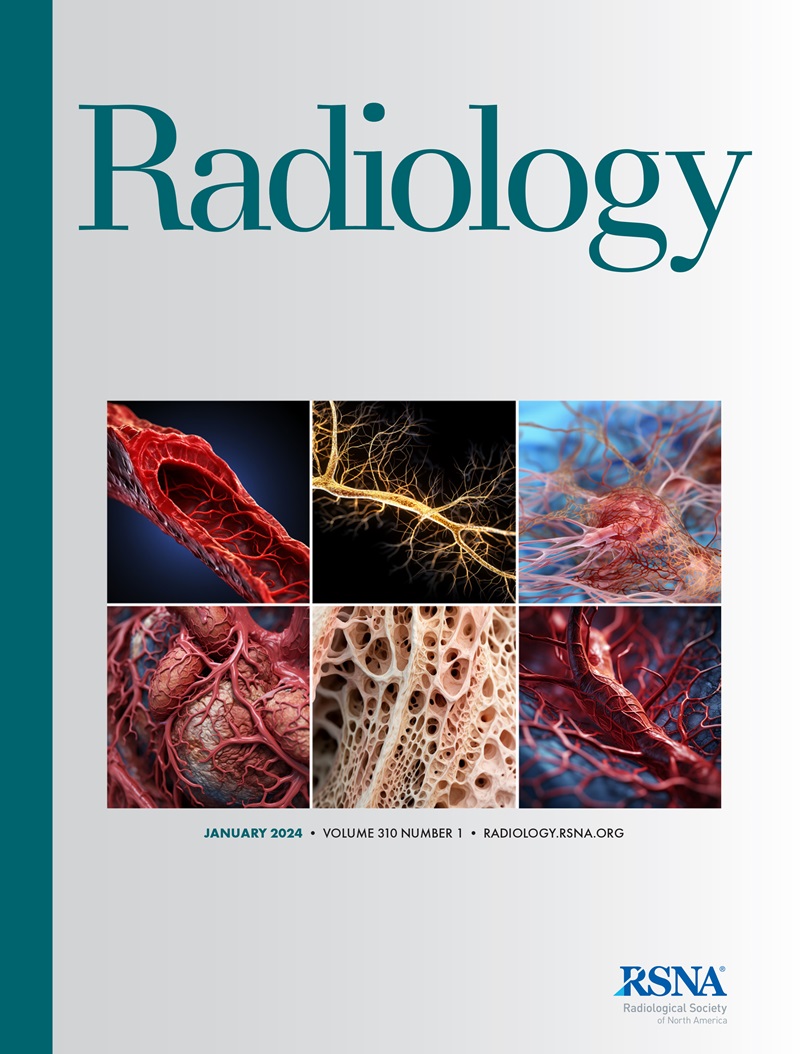David B Larson, Arogya Koirala, Lina Y Cheuy, Magdalini Paschali, Dave Van Veen, Hye Sun Na, Matthew B Petterson, Zhongnan Fang, Akshay S Chaudhari
下载PDF
{"title":"使用开源和闭源大型语言模型评估临床病史的完整性。","authors":"David B Larson, Arogya Koirala, Lina Y Cheuy, Magdalini Paschali, Dave Van Veen, Hye Sun Na, Matthew B Petterson, Zhongnan Fang, Akshay S Chaudhari","doi":"10.1148/radiol.241051","DOIUrl":null,"url":null,"abstract":"<p><p>Background Incomplete clinical histories are a well-known problem in radiology. Previous dedicated quality improvement efforts focusing on reproducible assessments of the completeness of free-text clinical histories have relied on tedious manual analysis. Purpose To adapt and evaluate open-source and closed-source large language models (LLMs) for their ability to automatically extract clinical history elements within imaging orders and to use the best-performing adapted open-source model to assess the completeness of a large sample of clinical histories as a benchmark for clinical practice. Materials and Methods This retrospective single-site study used previously extracted information accompanying CT, MRI, US, and radiography orders from August 2020 to May 2022 at an adult and pediatric emergency department of a 613-bed tertiary academic medical center. Two open-source (Llama 2-7B [Meta], Mistral-7B [Mistral AI]) and one closed-source (GPT-4 Turbo [OpenAI]) LLMs were adapted using prompt engineering, in-context learning, and fine-tuning (open-source only) to extract the elements \"past medical history,\" \"what,\" \"when,\" \"where,\" and \"clinical concern\" from clinical histories. Model performance, interreader agreement using Cohen κ (none to slight, 0.01-0.20; fair, 0.21-0.40; moderate, 0.41-0.60; substantial, 0.61-0.80; almost perfect, 0.81-1.00), and semantic similarity between the models and the adjudicated manual annotations of two board-certified radiologists with 16 and 3 years of postfellowship experience, respectively, were assessed using accuracy, Cohen κ, and BERTScore, an LLM metric that quantifies how well two pieces of text convey the same meaning; 95% CIs were also calculated. The best-performing open-source model was then used to assess completeness on a large dataset of unannotated clinical histories. Results A total of 50 186 clinical histories were included (794 training, 150 validation, 300 initial testing, 48 942 real-world application). Of the two open-source models, Mistral-7B outperformed Llama 2-7B in assessing completeness and was further fine-tuned. Both Mistral-7B and GPT-4 Turbo showed substantial overall agreement with radiologists (mean κ, 0.73 [95% CI: 0.67, 0.78] to 0.77 [95% CI: 0.71, 0.82]) and adjudicated annotations (mean BERTScore, 0.96 [95% CI: 0.96, 0.97] for both models; <i>P</i> = .38). Mistral-7B also rivaled GPT-4 Turbo in performance (weighted overall mean accuracy, 91% [95% CI: 89, 93] vs 92% [95% CI: 90, 94]; <i>P</i> = .31) despite being a smaller model. Using Mistral-7B, 26.2% (12 803 of 48 942) of unannotated clinical histories were found to contain all five elements. Conclusion An easily deployable fine-tuned open-source LLM (Mistral-7B), rivaling GPT-4 Turbo in performance, could effectively extract clinical history elements with substantial agreement with radiologists and produce a benchmark for completeness of a large sample of clinical histories. The model and code will be fully open-sourced. © RSNA, 2025 <i>Supplemental material is available for this article.</i></p>","PeriodicalId":20896,"journal":{"name":"Radiology","volume":"314 2","pages":"e241051"},"PeriodicalIF":12.1000,"publicationDate":"2025-02-01","publicationTypes":"Journal Article","fieldsOfStudy":null,"isOpenAccess":false,"openAccessPdf":"https://www.ncbi.nlm.nih.gov/pmc/articles/PMC11868845/pdf/","citationCount":"0","resultStr":"{\"title\":\"Assessing Completeness of Clinical Histories Accompanying Imaging Orders Using Adapted Open-Source and Closed-Source Large Language Models.\",\"authors\":\"David B Larson, Arogya Koirala, Lina Y Cheuy, Magdalini Paschali, Dave Van Veen, Hye Sun Na, Matthew B Petterson, Zhongnan Fang, Akshay S Chaudhari\",\"doi\":\"10.1148/radiol.241051\",\"DOIUrl\":null,\"url\":null,\"abstract\":\"<p><p>Background Incomplete clinical histories are a well-known problem in radiology. Previous dedicated quality improvement efforts focusing on reproducible assessments of the completeness of free-text clinical histories have relied on tedious manual analysis. Purpose To adapt and evaluate open-source and closed-source large language models (LLMs) for their ability to automatically extract clinical history elements within imaging orders and to use the best-performing adapted open-source model to assess the completeness of a large sample of clinical histories as a benchmark for clinical practice. Materials and Methods This retrospective single-site study used previously extracted information accompanying CT, MRI, US, and radiography orders from August 2020 to May 2022 at an adult and pediatric emergency department of a 613-bed tertiary academic medical center. Two open-source (Llama 2-7B [Meta], Mistral-7B [Mistral AI]) and one closed-source (GPT-4 Turbo [OpenAI]) LLMs were adapted using prompt engineering, in-context learning, and fine-tuning (open-source only) to extract the elements \\\"past medical history,\\\" \\\"what,\\\" \\\"when,\\\" \\\"where,\\\" and \\\"clinical concern\\\" from clinical histories. Model performance, interreader agreement using Cohen κ (none to slight, 0.01-0.20; fair, 0.21-0.40; moderate, 0.41-0.60; substantial, 0.61-0.80; almost perfect, 0.81-1.00), and semantic similarity between the models and the adjudicated manual annotations of two board-certified radiologists with 16 and 3 years of postfellowship experience, respectively, were assessed using accuracy, Cohen κ, and BERTScore, an LLM metric that quantifies how well two pieces of text convey the same meaning; 95% CIs were also calculated. The best-performing open-source model was then used to assess completeness on a large dataset of unannotated clinical histories. Results A total of 50 186 clinical histories were included (794 training, 150 validation, 300 initial testing, 48 942 real-world application). Of the two open-source models, Mistral-7B outperformed Llama 2-7B in assessing completeness and was further fine-tuned. Both Mistral-7B and GPT-4 Turbo showed substantial overall agreement with radiologists (mean κ, 0.73 [95% CI: 0.67, 0.78] to 0.77 [95% CI: 0.71, 0.82]) and adjudicated annotations (mean BERTScore, 0.96 [95% CI: 0.96, 0.97] for both models; <i>P</i> = .38). Mistral-7B also rivaled GPT-4 Turbo in performance (weighted overall mean accuracy, 91% [95% CI: 89, 93] vs 92% [95% CI: 90, 94]; <i>P</i> = .31) despite being a smaller model. Using Mistral-7B, 26.2% (12 803 of 48 942) of unannotated clinical histories were found to contain all five elements. Conclusion An easily deployable fine-tuned open-source LLM (Mistral-7B), rivaling GPT-4 Turbo in performance, could effectively extract clinical history elements with substantial agreement with radiologists and produce a benchmark for completeness of a large sample of clinical histories. The model and code will be fully open-sourced. © RSNA, 2025 <i>Supplemental material is available for this article.</i></p>\",\"PeriodicalId\":20896,\"journal\":{\"name\":\"Radiology\",\"volume\":\"314 2\",\"pages\":\"e241051\"},\"PeriodicalIF\":12.1000,\"publicationDate\":\"2025-02-01\",\"publicationTypes\":\"Journal Article\",\"fieldsOfStudy\":null,\"isOpenAccess\":false,\"openAccessPdf\":\"https://www.ncbi.nlm.nih.gov/pmc/articles/PMC11868845/pdf/\",\"citationCount\":\"0\",\"resultStr\":null,\"platform\":\"Semanticscholar\",\"paperid\":null,\"PeriodicalName\":\"Radiology\",\"FirstCategoryId\":\"3\",\"ListUrlMain\":\"https://doi.org/10.1148/radiol.241051\",\"RegionNum\":1,\"RegionCategory\":\"医学\",\"ArticlePicture\":[],\"TitleCN\":null,\"AbstractTextCN\":null,\"PMCID\":null,\"EPubDate\":\"\",\"PubModel\":\"\",\"JCR\":\"Q1\",\"JCRName\":\"RADIOLOGY, NUCLEAR MEDICINE & MEDICAL IMAGING\",\"Score\":null,\"Total\":0}","platform":"Semanticscholar","paperid":null,"PeriodicalName":"Radiology","FirstCategoryId":"3","ListUrlMain":"https://doi.org/10.1148/radiol.241051","RegionNum":1,"RegionCategory":"医学","ArticlePicture":[],"TitleCN":null,"AbstractTextCN":null,"PMCID":null,"EPubDate":"","PubModel":"","JCR":"Q1","JCRName":"RADIOLOGY, NUCLEAR MEDICINE & MEDICAL IMAGING","Score":null,"Total":0}
引用次数: 0
引用
批量引用

 求助内容:
求助内容: 应助结果提醒方式:
应助结果提醒方式:


